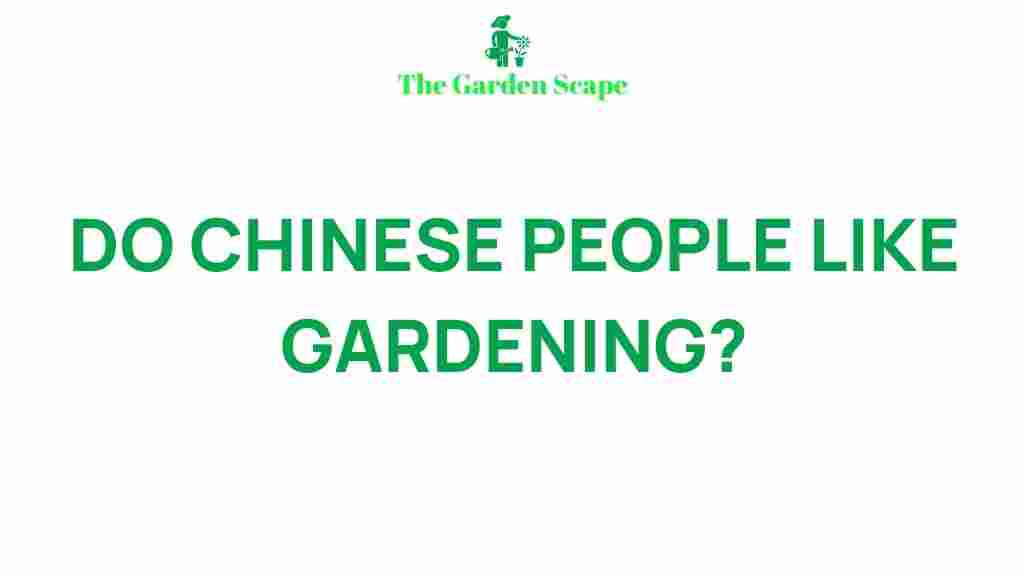Understanding Chinese Gardening Habits: A Blend of Tradition and Modernity
Gardening in Chinese culture is more than just a hobby—it’s a blend of ancient philosophies, aesthetic principles, and environmental harmony. From traditional landscapes inspired by Taoist and Confucian ideals to modern urban gardening, the Chinese have embraced gardening as an art and lifestyle. This article delves into the habits, techniques, and philosophies that define gardening in Chinese society, offering insights and practical tips for enthusiasts worldwide.
The Roots of Gardening in Chinese Culture
The origins of gardening in Chinese culture date back thousands of years. Traditional gardens reflect the profound influence of philosophies like Taoism and Confucianism, emphasizing balance, simplicity, and harmony with nature. Iconic elements such as water features, rocks, and meticulously arranged plants symbolize the interconnectedness of the natural world.
- Water features: Represent flow and renewal, often symbolizing prosperity.
- Rocks: Inspired by mountain landscapes, they signify strength and endurance.
- Plants: Carefully chosen for symbolic meanings, such as bamboo for resilience and plum blossoms for perseverance.
Modern Gardening Trends Among Chinese People
In recent years, urbanization has spurred innovative gardening trends among the Chinese. Balcony gardens, rooftop greenery, and indoor plants have become popular as city dwellers seek to reconnect with nature.
- Balcony gardening: Small spaces transformed into lush retreats with potted plants and vertical gardens.
- Community gardens: Shared spaces where neighbors grow vegetables and flowers together.
- Urban farming: A sustainable approach to growing fresh produce in city environments.
Step-by-Step Guide to Chinese-Inspired Gardening
Adopting Chinese-inspired gardening techniques can add beauty and meaning to your outdoor spaces. Follow these steps to create your own serene garden:
Step 1: Choose a Theme
Decide on the purpose and style of your garden. A traditional Chinese garden emphasizes natural elements, symbolic plants, and tranquil aesthetics.
Step 2: Design the Layout
Incorporate essential elements such as water features, rocks, and winding pathways. Balance is key—arrange elements to create a sense of flow and harmony.
Step 3: Select Meaningful Plants
Choose plants with cultural significance, such as:
- Bamboo: Represents resilience and flexibility.
- Lotus: Symbolizes purity and enlightenment.
- Pine trees: Denote longevity and steadfastness.
Step 4: Incorporate Decorative Features
Add pavilions, moon gates, or stone lanterns to enhance the traditional aesthetic. These features provide visual interest and serve as focal points.
Step 5: Maintain the Space
Regular pruning, watering, and care ensure your garden remains a tranquil haven. Use natural fertilizers and environmentally friendly practices to honor the connection with nature.
Troubleshooting Common Gardening Challenges
Even experienced gardeners face challenges. Here are some common issues and solutions inspired by Chinese gardening wisdom:
- Poor soil quality: Enrich the soil with organic compost and plant nitrogen-fixing species like legumes.
- Pest problems: Use natural remedies like neem oil or companion planting to deter pests.
- Limited space: Opt for vertical gardening or compact plant varieties suitable for small areas.
- Overwatering: Install proper drainage systems to prevent root rot and maintain healthy plants.
Gardening as a Lifestyle in Chinese Culture
For many Chinese, gardening is more than a pastime—it’s a way of life. It provides an opportunity to unwind, reflect, and nurture both plants and the soul. Community gardens are especially popular, fostering social connections while promoting sustainable practices.
Incorporating traditional Chinese gardening philosophies into your routine can bring a sense of peace and purpose. Whether through balcony gardens or expansive landscapes, the essence lies in respecting nature and finding joy in its beauty.
Conclusion: Embracing the Harmony of Chinese Gardening
Exploring the fascinating gardening habits of Chinese people reveals a deep connection to nature and a legacy of thoughtful design. From symbolic plants to harmonious layouts, their practices offer inspiration for gardeners worldwide. By blending tradition with modern techniques, you can create a serene, meaningful space that reflects the timeless wisdom of Chinese gardening.
Ready to start your journey? Discover more tips and ideas on gardening practices from around the world on our resources page. Embrace the art of gardening the Chinese way and transform your space into a haven of beauty and balance.
This article is in the category Garden Design and created by TheGardenScape Team
